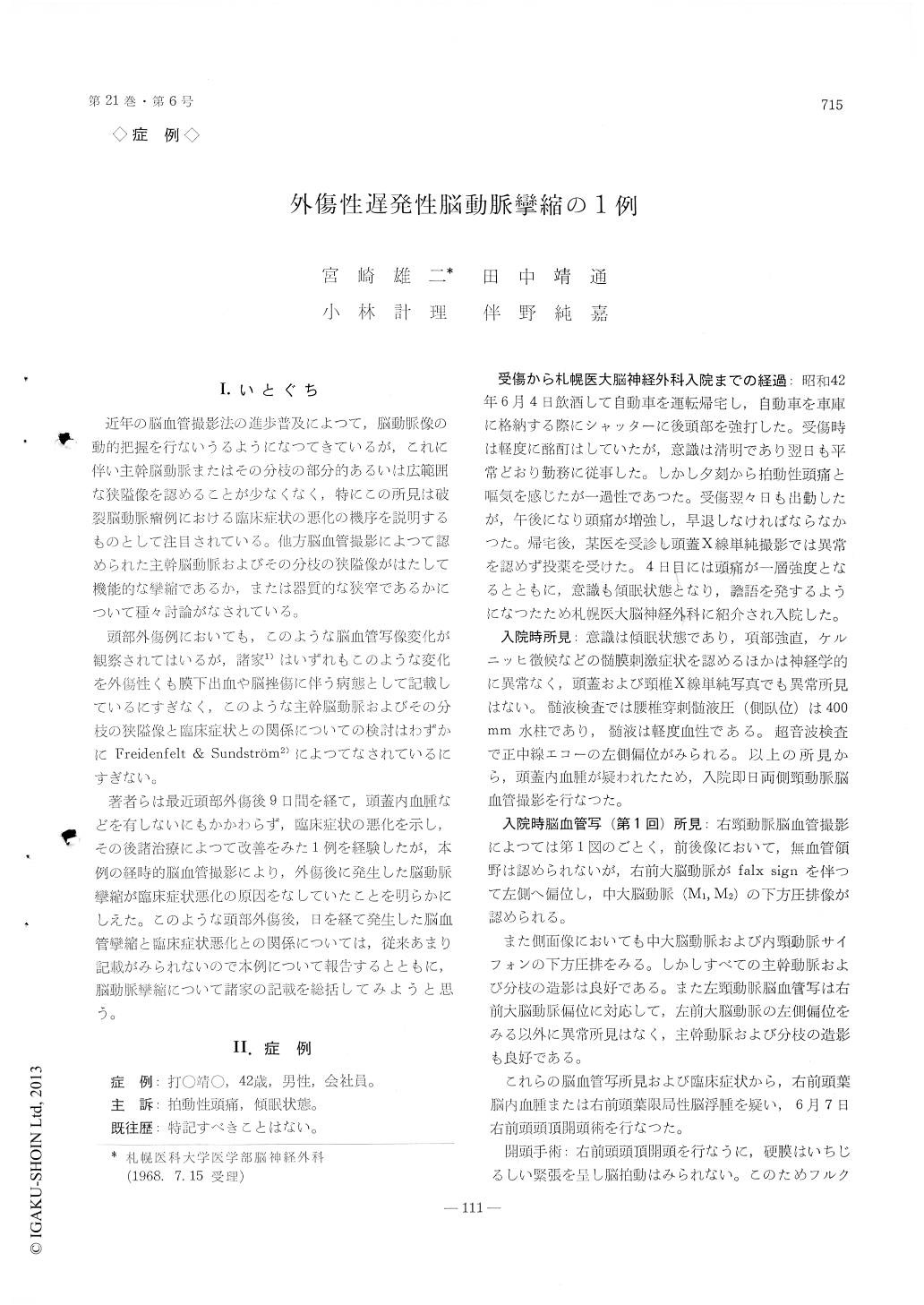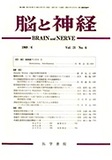Japanese
English
- 有料閲覧
- Abstract 文献概要
- 1ページ目 Look Inside
I.いとぐち
近年の脳血管撮影法の進歩普及によつて,脳動脈像の動的把握を行ないうるようになつてきているが,これに伴い主幹脳動脈またはその分枝の部分的あるいは広範囲な狭隘像を認めることが少なくなく,特にこの所見は破裂脳動脈瘤例における臨床症状の悪化の機序を説明するものとして注目されている。他方脳血管撮影によつて認められた主幹脳動脈およびその分枝の狭隘像がはたして機能的な攣縮であるか,または器質的な狭窄であるかについて種々討論がなされている。
頭部外傷例においても,このような脳血管写像変化が観察されてはいるが,諸家1)はいずれもこのような変化を外傷性くも膜下出血や脳挫傷に伴う病態として記載しているにすぎなく,このような主幹脳動脈およびその分枝の狭隘像と臨床症状との関係についての検討はわずかにFreidenfelt & Sundström2)によつてなされているにすぎない。
The narrowing of intracranial artery in cerebral angiogram is well known in cases of subarachnoid hemorrhage on ruptured intracranial aneurysms with or withoutneurological symptom and sign and this angiographic evidence has been thought as arterio-spasm.
However, the arteriospasm might be observed in cases of head injury also, very few description on this evidence are seen. The correlation between the posttraumatic cerebral arteriospasm and post-traumatic neurological evidence were discussed in very few papers.
The authors reported a case of head injury who shows extensive cerebral arteriospasm in cerebral angiogram and marked neurological evidence at several days after head injury.
The patient was 42 year-old man, become confu-sional state and developed hemiparesis in ninth day after head injury. The cerebral angiography was performed and extensive arteriospasm in anterior cerebral artery (A1,A2) and middle cerebral artery (M1) were demonstrated and no evidence of epidural or subdural hematoma and intracerebral hematoma was observed.
The procedures to relieve the cerebral arterio-spasm were clone and the correlation between the course of symptoms and angiographic evidences was observed by repeated cerebral angiograms. As this patient shows no neurological evidences three weeks later, the authors emphasize the great possibility of occurrence of cerebral arteriospasm in a case of head injury also.

Copyright © 1969, Igaku-Shoin Ltd. All rights reserved.


